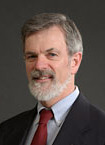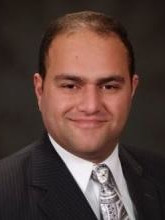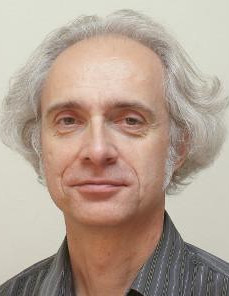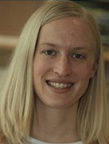|
INTRODUCTION
SCOPE & STYLE
The Research Happy Hour (RHH) series of talks and discussions explores breakthrough discoveries, cutting-edge research methods, novel developments, and interesting perspectives: ideas that might inspire research projects.
The meetings have an informal style and aim at 50% time for discussion. Typically, speakers take questions during the presentation, and the host moderates the discussion. This format has been very successful, engaging, and inspiring for the participants. It allows us to gain insights beyond traditional talks. Some people may know this format as the style of the legendary flow-volume-underworld meetings.
Organized and hosted by: Tilo Winkler & Zhongcong Xie
|
|
|
UPCOMING
TALKS & DISCUSSIONS
|
|
Add to Calendar >
Wednesday, September 28, 2022, 5:30 PM – 6:30 PM EDT
Click to join: https://partners.zoom.us/j/88234994572
|

|
Keith Miller, Ph.D.
Mallinckrodt Professor of Pharmacology in the Department of Anaesthesia, Harvard Medical School; Investigator at Massachusetts General Hospital, DACCPM, Boston, MA
The GABA(A) receptor family; well behaved synaptic receptors, and unruly extra-synaptic receptors
GABA(A) receptors are the site of action of general anesthetics. They have five subunits arranged symmetrically around an ion conducting channel. There are 19 subunits, so many arrangements are possible. Anesthetics bind between specific pairs of subunits, so we expect them to act differently on different members of the GABA(A)R family. Thus, establishing which arrangements exist is important.
|
|
PREVIOUS
TALKS & DISCUSSIONS
|
|
|
Thursday, July 14, 2022, 5:30 PM – 6:30 PM EDT
|

|
Yu (Woody) Lin, Ph.D.
Program Director and Physician Scientist, Division of Neuroscience and Behavior, National Institute on Drug Abuse, National Institutes of Health/ HHS
Winning the competition to secure NIH grant -- A program officer's words of wisdom
Dr. Lin is a NIDA Program Official and a member of the institute’s Research Training Committee and K99/R00 Program Committee. His program portfolio oversees training/mentoring awards and neuroscience research projects.
|
|
|
Wednesday, May 11, 2022, 5:30 PM – 6:30 PM EDT
|

|
Yongjie Yang, Ph.D.
Professor in the Department of Neuroscience at Tufts University School of Medicine, Boston, MA
Cell-type specific exosome signaling in neurodegenerative diseases
Altered glia to neuron signaling significantly impact pathological development in neurodegenerative diseases. Intercellular exosome signaling emerges as a new pathway that has been implicated in different neurodegenerative diseases. In this seminar, I will be talking about our efforts in understanding exosome-dependent neuron to glia signaling and how cell-type specific exosome signaling is differentially involved in neurodegenerative diseases.
|
|
|
Wednesday, April 27, 2022, 5:30 PM – 6:30 PM EDT
|

|
Eduardo L. V. Costa, M.D.
Pulmonary and Critical Care Physician and Professor at the University of Sao Paulo School of Medicine, Sao Paulo, Brazil
How can we avoid ventilator-induced lung injury (VILI) during mechanical ventilation?
High tidal volumes and high driving pressures are two accepted causes of harm to the lungs. The frequency at which these harmful ventilatory settings are applied likely matters as well and mechanical power was proposed as a variable that lumps together these potential causes of VILI. The idea of the meeting is to discuss what components are in fact associated with harm.
|
|
|
Wednesday, February 23, 2022, 5:15 PM – 6:15 PM EDT
|

|
Bindi S Brook, Ph.D.
Associate Professor at University of Nottingham, UK, Director of the Centre for Mathematical Medicine and Biology, and chair of BIOREME, a newly launched EPSRC-funded Network+ research project
Understanding airway contraction and remodeling in asthma -- data-driven modeling in respiratory medicine
Dr. Brook will start by introducing an exciting new EPSRC-funded network entitled “Integrating data-driven biophysical models into respiratory medicine”. The aim of this network is to catalyze new partnerships linking researchers in academia, medicine, industry, and charity who are interested in the applications of mathematical modeling to lung health and respiratory medicine. Dr. Brook will give some examples of related work her group has been doing to explore the role of tissue mechanics in bronchoconstriction and airway remodeling in asthma.
|
|
|
Wednesday, January 19, 2022, 5:30 PM – 6:30 PM EDT
|

|
Xinzhong Dong, Ph.D.
Professor of Neuroscience and Neurosurgery, Johns Hopkins University & Investigator, Howard Hughes Medical Institute
Revealing pain mechanisms by in vivo DRG imaging
Xinzhong Dong has made original contributions in identifying a novel family of G protein-coupled receptors (GPCRs) in mice called Mrgprs that are important in mediating itch and pain. He has provided key mechanistic insights into how these receptors are expressed, regulated, and more importantly, implicated in disease processes including pseudo-allergic reactions, itch, and pain. He is a professor at the Johns Hopkins University and an Investigator at the Howard Hughes Medical Institute, and has published extensively on Cell, Nature, Nature Neuroscience, Immunity, Neuron, etc.
|
|
|
Wednesday, October 27, 2021, 5:00 PM - 6:00 PM EDT
|

|
Farbod Nicholas Rahaghi, M.D., Ph.D.
Assistant Professor in Medicine at Brigham and Women’s Hospital
Quantifying and visualizing the pulmonary vasculature with CT imaging
We will discuss visualization and quantification of the pulmonary vasculature using clinical CT scans, including mapping changes in response to nitric oxide and catheter-based lysis of pulmonary emboli. We will also discuss changes observed in pulmonary arterial hypertension and exercise-pulmonary hypertension, as well as those in pulmonary embolus and chronic thromboembolic disease.
|
|
|
Wednesday, September 29, 2021, 5:30 PM - 6:30 PM EDT
|

|
Shujia Zhu, Ph.D.
Principal Investigator, Institute of Neuroscience, State Key Laboratory of Neuroscience, CAS Center for Excellence in Brain Science and Intelligence Technology, Chinese Academy of Sciences, Shanghai 200031, China
Molecular basis of ketamine action on human NMDA receptors
Ketamine is a non-competitive channel blocker of N-Methyl-D-Aspartate (NMDA) receptor. A single sub-anesthetic dose of ketamine produces rapid (within hours) and long-lasting antidepressant effects in patients who are resistant to conventional antidepressants, which is arguably the most striking breakthrough in the field of depression. We resolved the cryo-EM structures of human GluN1-GluN2A and GluN1-GluN2B NMDA receptors in complex with ketamine. Both electron density maps uncovered the binding pocket for ketamine in the central vestibule between the channel gate and selectivity filter. Molecular dynamics simulation revealed that ketamine displays motions between two distinct locations within the binding pocket. Moreover, two amino acids, Leu642 on GluN2A (homologous Leu643 on GluN2B) and Asn616 on GluN1, were identified as key residues forming hydrophobic and hydrogen-bond interactions with ketamine, and mutations at these identified residues led to the reduced potency of ketamine in blocking the NMDA receptor channel activity. These findings provide the structural basis of ketamine binding and action on human NMDA receptors, and pave the way for future development of ketamine-based antidepressants.
|
|
|
Wednesday, June 23, 2021, 5:00 PM – 6:00 PM EDT
|

|
Aranya Bagchi, M.B.B.S.
Assistant Professor of Anaesthesia, Harvard Medical School; Staff Anesthesiologist/Intensivist, MGH DACCPM, Boston, MA
The role of iron homeostasis in driving neurologic outcomes after cardiac arrest
Cardiac arrest is a highly lethal condition that affects more than 300,000 adults each year in the United States, with a mortality of more than 60%. Among survivors to hospital admission the majority suffer brain injury, for which there is no pharmacologic treatment. We hypothesize that a strong inflammatory response after resuscitation from cardiac arrest increases production of the master iron regulating hormone hepcidin, which causes an accumulation of iron within neurons, activating an iron-dependent programmed cell death mechanism known as ferroptosis. In this talk, I will present data supporting our hypothesis, while emphasizing areas of uncertainty. In the long term, development of therapies to minimize neurologic dysfunction in patients resuscitated from cardiac arrest have the potential to have a significant impact on the medical management of post-cardiac arrest patients, with the likelihood of positively influencing patient outcomes.
|
|
|
Wednesday, May 26, 2021, 5:00 PM – 6:00 PM EDT
|

|
Guang Yang, Ph.D.
Associate Professor, Dept. of Anesthesiology, Columbia University
In vivo studies of neural circuit plasticity in chronic pain
Dr. Yang’s research aims to elucidate the mechanisms of surgery-induced chronic pain and cognitive dysfunction at the synaptic, cellular and circuit levels. Her lab uses a variety of techniques, including in vivo two-photon imaging, opto- and chemo-genetics, and virus-mediated circuit tracing. Currently her lab is studying the plasticity of the somatosensory system during the transition from acute to chronic pain.
|
|
|
Wednesday, April 14, 2021, 5:00 PM – 6:00 PM EDT
|

|
Binglan Yu, Ph.D.
Assistant Professor of Anesthesia, Harvard Medical School; Assistant Investigator at Massachusetts General Hospital, DACCPM, Boston, MA
Development of a nitric oxide generator that can produce pure nitric oxide from air using pulsed electrical discharges
Inhaled nitric oxide (NO) produces selective pulmonary vasodilation without reducing systemic vascular resistance or systemic arterial pressure. However, the high cost of providing NO and its complex cylinder delivery system limit this life-saving inhaled NO therapy for in-hospital use to well-equipped medical centers in developed countries. This talk introduces the design and development of electrical generation of NO from air using pulsed electrical discharges, describes the studies of efficacy of electric NO in vasodilating pulmonary vasculature of large animal model and human volunteers, and discusses the potential applications of electric NO in treating a broad spectrum of diseases.
|
|
|
Wednesday, October 30, 2019, 5:00 PM – 6:00 PM EDT
|

|
Tilo Winkler, Ph.D.
Assistant Professor of Anesthesia, Harvard Medical School; Assistant Investigator at Massachusetts General Hospital, DACCPM, Boston, MA
Now I see it -- Principles of scientific data visualization
Data visualization has become ubiquitous in science and daily life. However, a better understanding of the principles of scientific data visualization could, in most cases, significantly improve the clarity and transparency of the data. The talk will focus on principles of visual perception and graphic design everyone should know to develop effective visualizations of scientific or clinical data. The talk will include a brief history of data visualization, many examples, and a critical discussion of the pros and cons of different visualization types and the design choices for clarification. It will also cover some aspects of Edward Tufte's famous publications.
|
|
|
Monday, September 23, 2019 5:00 PM – 6:00 PM EDT
|

|
Huajun Feng, Ph.D. (MGH) & Shaomin Li, M.D., Ph.D. (BWH)
Assistant Professor of Anesthesia, Harvard Medical School; Assistant Investigator at Massachusetts General Hospital, DACCPM (MGH) & Assistant Professor of Neurology, Harvard Medical School; Assistant Investigator at Brigham and Women's Hospital (BWH)
The application of electrophysiology in anesthesia research
Dr. Feng will discuss the in vitro part and Dr. Li will discuss the in vivo part and MEA, the new technology.
|
|
|
Wednesday, June 19, 2019, 5:15 PM – 6:15 PM EDT
|

|
Douglas Richardson, Ph.D.
Director of Imaging at the Harvard Center for Biological Imaging
Advances in cleared tissue imaging
Biological specimens are intrinsically three dimensional; however, because of the obscuring effects of light scatter, imaging deep into a tissue volume is problematic. Although efforts to eliminate the scatter by “clearing” the tissue have been ongoing for over a century, there have been a large number of recent innovations. This talk introduces the physical basis for light scatter in tissue, describes the mechanisms underlying various clearing techniques, and discusses several of the major advances in light microscopy for imaging cleared tissue.
|
|
|
Wednesday, May 1, 2019 at 5:15 PM - 6:15 PM EDT
|

|
Keith Miller, Ph.D.
Mallinckrodt Professor of Pharmacology, Harvard Medical School; Investigator at Massachusetts General Hospital, DACCPM, Boston, MA
Multiple specific general anesthetic sites on GABA(A) receptors -- what are the clinical implications?
Over the last decade a fairly detailed picture has emerged concerning the molecular mechanisms of action of general anesthetics on synaptic GABA(A)Rs. These receptors are the major inhibitory ligand-gated ion channels in the CNS, and general anesthetics enhance the action of GABA on them leading to anesthesia. The GABA(A)R is a large protein with five separate subunits. We now know that a given intravenous anesthetic binds to one of three classes of binding site depending on its chemical structure. Etomidate, pentobarbital and alphaxalone thus bind to different sites. More recently it has become apparent, that these three sites talk to each other. These so–called allosteric interactions have interesting implications for clinical practice, which we will explore.
|
|
|
Wednesday, April 3, 2019, 5:15 PM - 6:15 PM EDT
|

|
Christa Nehs, Ph.D.
Assistant Professor of Anaesthesia, Harvard Medical School; Assistant Investigator at Massachusetts General Hospital, DACCPM, Boston, MA
Optogenetic and DREADD manipulation of neural circuits in anesthesia
Optogenetics and DREADDs are useful tools to selectively manipulate brain circuits. This talk will give an overview of each technique including pros and cons and then review the literature that has used these techniques to investigate sleep and anesthesia regulation.
|
|
|
Wednesday, January 23, 2019, 5:15PM – 6:15PM EDT
|

|
Tilo Winkler, Ph.D.
Assistant Professor of Anesthesia, Harvard Medical School; Assistant Investigator at Massachusetts General Hospital, DACCPM, Boston, MA
Bronchoconstriction in asthma and why "More is different"
Bronchoconstriction is an essential feature of asthma attacks. Ex vivo stimulation of airway smooth muscle leads to the constriction of an airway. However, ventilation imaging during bronchoconstriction shows regional impairments of ventilation, referred to as ventilation defects (VDefs), which is strong evidence for major regional differences in bronchoconstriction. How is this contradiction possible? Why does the behavior of individual elements of a larger system, such as individual airways, not explain phenomena such as VDefs in the whole system? The fundamental reason is that emergent phenomena result from interactions among the elements of a complex system, and feedback mechanisms can lead to differentiation and the emergence of heterogeneity. The Nobel laureate Philip Anderson emphasized in a Science paper entitled "More is different" that extrapolation from the behavior of an element to the whole system fails in complex systems, and this applies to airway behavior in asthma, phase separation in cell signaling, the emergence of life, as well as other phenomena of complex systems.
|
|
|
|
|
|